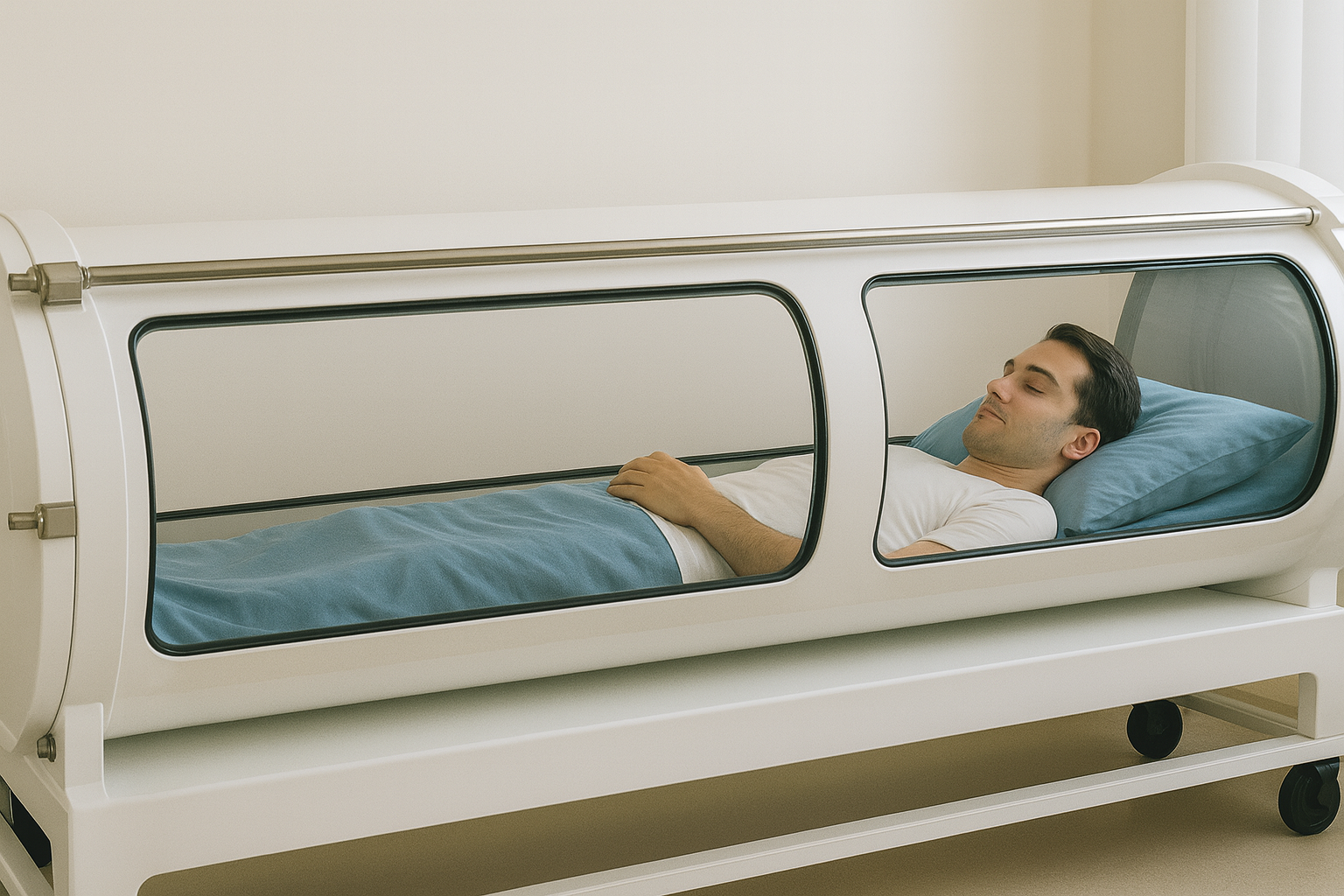
In the ever-evolving world of medicine and sports therapy, hyperbaric oxygen therapy (HBOT) is no longer just a niche treatment for deep-sea divers with decompression sickness.
It’s rapidly becoming a mainstream solution for accelerating injury recovery, thanks to its ability to flood the body with pure oxygen, fueling healing at a cellular level.
Whether it’s a torn ligament, a non-healing wound, or post-surgical rehabilitation, HBOT is now playing a critical role in restoring function and reducing recovery time.
Hyperbaric oxygen therapy involves breathing 100% oxygen inside a pressurized chamber, usually at 1.5 to 3 times the normal atmospheric pressure.
This process significantly increases the amount of oxygen your blood can carry, saturating tissues that are often oxygen-starved during injury or inflammation.
Here’s what happens inside the body during HBOT:
Every injury—whether it’s a muscle tear, bone fracture, or surgical wound—triggers a biological cascade. For healing to occur, the body needs ample oxygen, especially at the wound site. But in many injuries, local swelling or trauma restricts blood flow, cutting off the oxygen supply just when it’s needed most.
HBOT helps break this cycle. By dramatically increasing oxygen concentration in the blood, HBOT:
Hyperbaric oxygen therapy has quietly become a trusted ally in injury recovery, not just for elite athletes, but for everyday people healing from serious trauma or complex post-operative wounds. The range of injuries it supports is impressively wide.
For instance, in sports injuries like sprains, strains, and deep tissue contusions, HBOT helps by reducing inflammation and flooding damaged tissues with oxygen, accelerating regeneration, and easing pain. This has made it increasingly popular among physical therapists and sports medicine clinics.
In cases of fractures, especially those with delayed union or non-union, HBOT can stimulate angiogenesis—new blood vessel formation—thereby enhancing bone repair and minimizing the risk of long-term complications.
For burn victims, particularly those undergoing skin grafts, hyperbaric sessions can improve graft acceptance and encourage the growth of new, healthy tissue. The therapy supports cellular repair mechanisms and reduces oxidative stress in burned areas.
Patients recovering from surgical wounds also benefit. HBOT improves post-operative healing by boosting oxygen delivery to the surgical site, which not only promotes faster recovery but also reduces the risk of infection.
In severe trauma cases, like crush injuries, where blood flow is often compromised, HBOT can reverse ischemia (lack of oxygen) and help prevent tissue necrosis. It’s also used in combination with debridement and other emergency interventions.
Finally, for those suffering from radiation-induced tissue damage—a common but under-discussed side effect of cancer treatment—HBOT helps rejuvenate oxygen-deprived soft tissues. This reduces chronic pain and helps restore function in areas damaged by radiation therapy.
Professional athletes have long sought out cutting-edge recovery techniques, and HBOT is no exception. Notable users include:
Their experiences aren’t just anecdotal; they’re backed by a growing body of sports science research that supports HBOT’s role in faster, safer recovery.
While HBOT is generally safe, it’s not without minor risks. Patients may experience:
Treatment must be supervised by a licensed hyperbaric medicine specialist and performed in certified facilities.
With ongoing clinical trials exploring HBOT’s potential in traumatic brain injury (TBI), long COVID recovery, and orthopedic surgery, the therapy is poised to become a mainstay in regenerative and rehabilitative medicine.
Increasing accessibility of sitting chambers and portable HBOT devices is making it easier for patients to access this therapy, right from the comfort of their homes or recovery centers.
For anyone recovering from an injury—be it a pro athlete, weekend warrior, or post-op patient—HBOT offers a science-backed, non-invasive boost to the body’s natural healing powers. As awareness grows and technology evolves, HBOT is quickly transitioning from niche to necessity in the injury recovery toolkit.
A: It depends on the severity of the injury. Some patients feel benefits after just a few sessions, while others may require 20–40 treatments for significant improvement.
A: In many countries, HBOT is covered for specific conditions like chronic wounds and burns. For sports or off-label use, coverage may vary—check with your provider.
A: Yes. In fact, HBOT is often used in combination with physiotherapy, surgery, or medications for a more holistic recovery approach.
A: Yes, HBOT has shown promise in treating long-standing injuries where healing has stalled due to poor blood supply or inflammation.